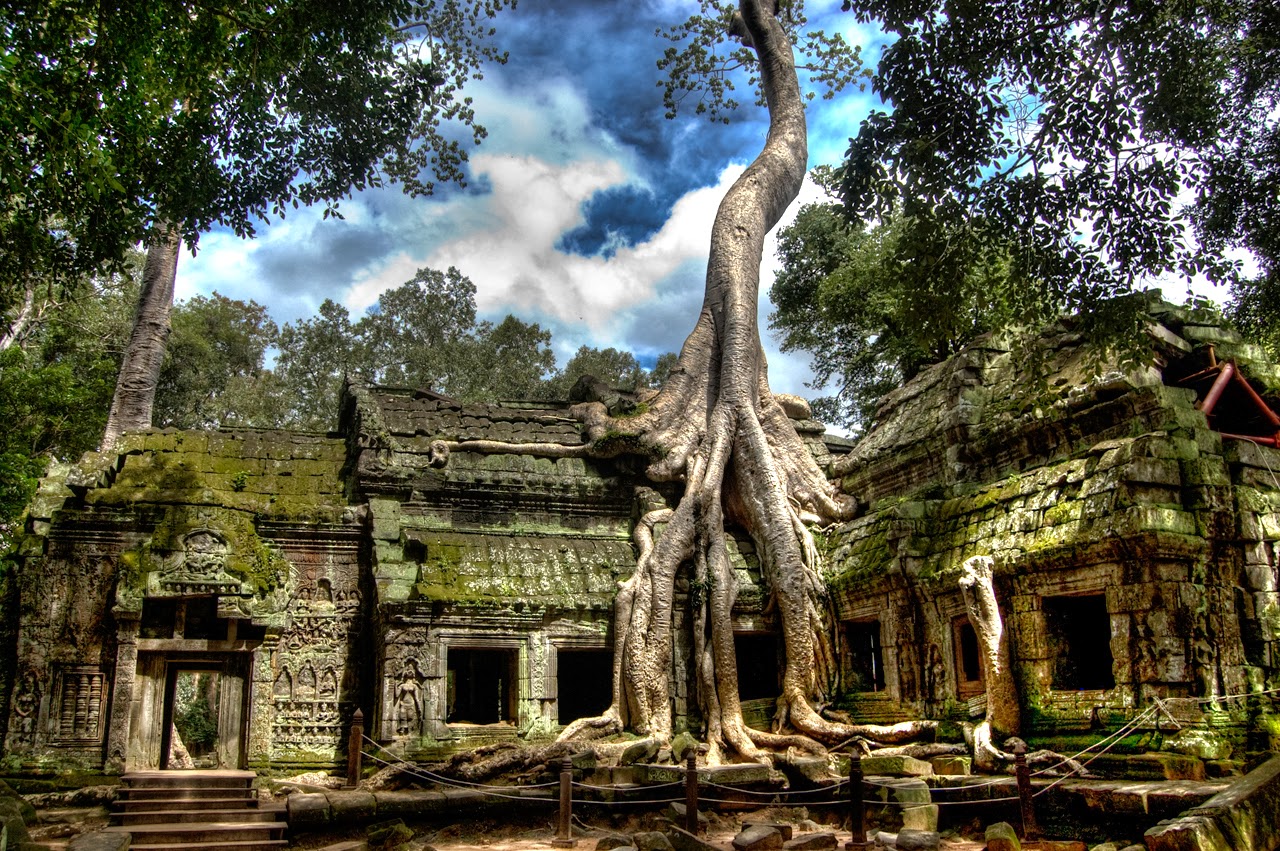Cambodia is widely known for Angkor Wat and the timeless beauty of its temples. Not far away, Prasat Ta Prohm (Ta Prohm Temple) is the most photographed and captivating destination for adventurers from around the world. What impresses visitors is not only the historical value from the past but also the image of gigantic tree roots and the bizarre embrace of the silk-cotton and strangler fig trees around the temple. This temple is considered a symbol of nature’s power. Traces of giant trees piercing through walls or roofs of ancient towers create a unique and rare landscape. If you have a passion for exploring history and ancient architecture, Ta Prohm Temple is definitely a dreamland you must visit.

Ta Prohm Temple is a remarkable temple unlike any other in the world. Just stepping through its gate, you are instantly transported into a mystical dimension where nature reigns. What sets the temple apart are the massive tree roots winding around crumbling stone walls, towering ancient trees with massive canopies, and long, dark corridors that attract those who love to explore.

While Angkor Wat takes center stage in the area, Ta Prohm Temple is just a few hundred meters away, holding a completely different story within its embrace. Here, the dense forest has engulfed almost every corner of the temple: thick roots press tightly against limestone blocks, while vines cling to the roofs. For hundreds of years, Ta Prohm was devoured by the Cambodian jungle. Trees began to grow from the crevices of the walls, descended from the roofs, and as they grew larger, they began to topple the stone walls. These ancient trees, with their invasive massive root systems, add to the beauty and mystery of Ta Prohm.

Recently, Ta Prohm has become the focus of a restoration project. Scaffolding, metal supports, wooden walkways, and rope fences have been added to rehabilitate and preserve this magnificent area in Cambodia. Not only will the scaffolding and fences obstruct your view, but also hundreds of tourists pour into the temples of Siem Reap every day, especially during the peak season from November to February.

It’s no wonder this place was chosen as a filming location for the movie Tomb Raider in 2001: It perfectly portrays an ancient ruin swallowed by the jungle and undeniably ranks among the most hauntingly desolate locations.



History of Ta Prohm Temple
Ta Prohm Temple was constructed in 1186 AD during the Khmer Empire. King Jayavarman VII initiated its construction with the original purpose of being a Buddhist monastery and university, as part of his infrastructural plans for the empire.
At that time, Ta Prohm was known as Rajavihara, meaning “Monastery of the King,” and it was built to honor the Jayavarman family. The most revered figure in the temple, Prajnaparamita, was depicted in the image of the king’s mother. Other sections of the temple were dedicated to the king’s siblings and his spiritual mentor. Ta Prohm is believed to have formed a pair with Preah Khan, another temple built in 1191, where the depictions within the temple were modeled after King Jayavarman’s father.
For a time, Ta Prohm was home to 12,500 people, including 18 high-ranking priests and 615 Apsara dancers, and it provided services to over 800,000 inhabitants in surrounding villages. However, after the fall of the Khmer Empire in the 15th century, Ta Prohm fell into a state of abandonment, neglect, and endured damage over hundreds of years.








The Glorious Comeback
When Ta Prohm was discovered by the French in the late 19th century, they deemed the task of separating the temple from the surrounding jungle to be impossible. Recognizing the interdependence of the temple and the trees over centuries, they focused on preserving Ta Prohm in its partially engulfed state, restoring and stabilizing some unaffected areas.
The result is the breathtaking landscape we see today, where we can grasp its original structure from its golden age while marveling at the impressive fusion of tree roots and preserved forest.
In addition to enjoying the grandeur of nature’s creation, you can delve into history and art through the architectural features of the towers. Ta Prohm is not just a temple; it is a maze. The temple has a surprising number of identical-looking doorways and windows. Some corridors lead to dead ends, blocked by piles of jumbled stones. Despite being partly damaged by trees and time, you can uncover hidden secrets within the walls of the towers or stone hallways. Exploring the hallways is fascinating because you can encounter numerous bas-reliefs. Like most temples in Angkor, Ta Prohm showcases intricate decorative stone carvings adorning its walls and columns. The faces of Jayavarman are typical examples of masterful and striking sculptures. There is an unexplained phenomenon where the tree roots deliberately avoid passing through these faces. It remains a mystery, as nature, despite its powerful force of destruction, seemingly pays respect to humanity. When exploring or walking around, be mindful not to climb on walls or columns as they may collapse.







Ta Prohm features 39 interconnected towers of various sizes, linked by exhibition areas. The conservation area is surrounded by five rectangular walls, with the outer wall measuring 1km in length and 600m in width, giving you an idea of its vastness. There are four entrances, but currently, visitors can only enter through the East and West gates. In addition to the exhibition areas, there are libraries and satellite shrines. Like other Khmer temples, Ta Prohm boasts magnificent architecture while showcasing the power of the surrounding jungle. It is definitely worth spending half a day exploring when visiting Cambodia.